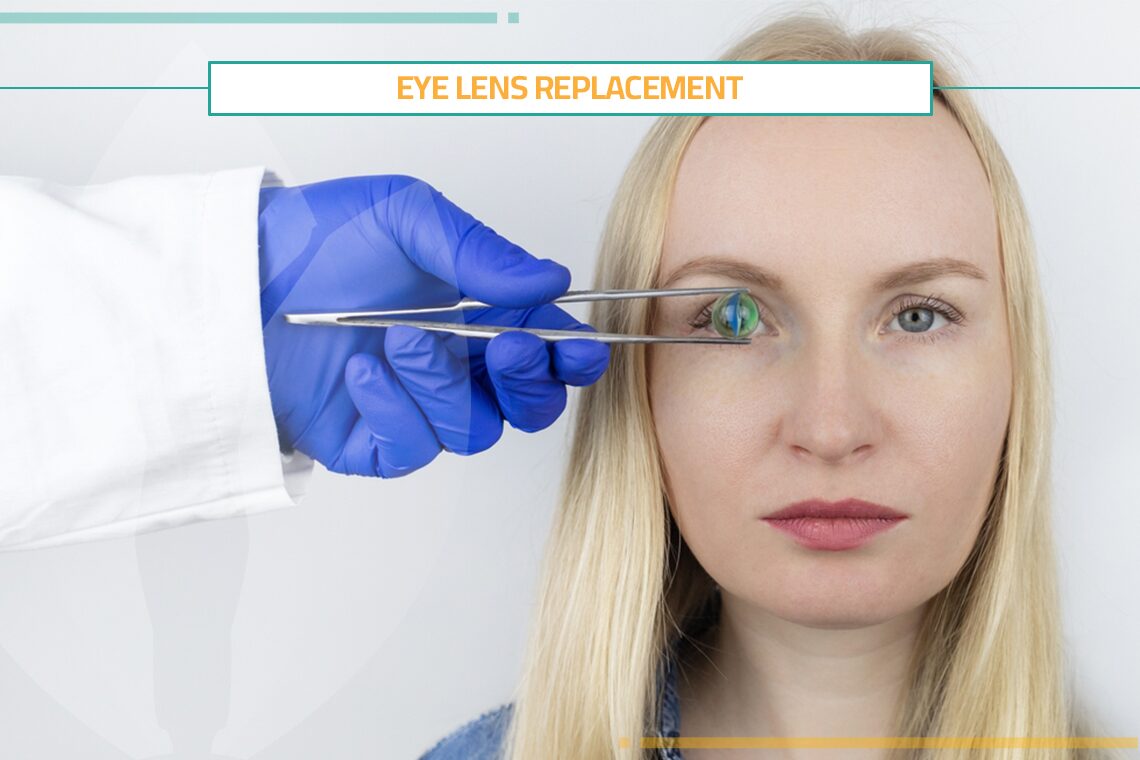Intraocular Lens Implant
To fix vision, a variety of procedures are employed such as Intraocular Lens Implant. In addition to lens replacement surgery, there are laser vision correction options including femto-LASIK.
One option that physicians use when LASIK vision repair surgery is not appropriate is lens implantation. Nearsightedness, farsightedness, and astigmatism are among the vision impairments that can be corrected by implanting a lens in the eye.
This blog will teach you everything you need to know about lens implantation in the eye, including the varieties of lenses, the procedure, and whether or not your situation calls for lens implantation.
Lens Replacement Surgery Cost
The price of eye lens implant is among the most common inquiries regarding this surgical treatment. Due to the high cost of the implanted lens, some people find lens implantation surgery to be costly. As a result, physicians only suggest it in specific situations that are unsuitable for LASIK surgery.
What Is Intraocular Lens Implant?
Because the natural lens is unable to focus light and send it to the retina, it is a surgical process used in the field of vision correction and eye care that involves replacing the lens, a transparent component in the front of the eye.
The capacity to see clearly is affected by any disease or injury to the natural lens, which is why it can be removed and replaced entirely with a new artificial lens to restore eyesight.
Intraocular Lens Implant is common among patients who have previously suffered from cataracts, in addition to the elderly whose lens has begun to lose its flexibility, transparency and ability to deal with light.
The ICL lens implantation procedure is known as “Lens Implantation Surgery“, which is a surgical procedure used to correct vision problems such as nearsightedness or farsightedness. The procedure involves implanting an artificial lens inside the eye to improve vision, and is a safe alternative to glasses or contact lenses. This procedure is performed using advanced techniques, and is suitable for people who cannot benefit from traditional laser surgeries such as LASIK.
Why an Artificial Lens Should Be Implanted in the Eye?
In order to improve and correct visual problems like myopia and astigmatism, or to remove the cataract-affected eye lens and replace it with an artificial one, intraocular lens implantation is always performed. In order to determine the best course of action and the best kinds of lenses to implant into the eye based on the condition of the eye, a doctor is consulted to diagnose the condition and its causes. Among these are the following explanations:
– People who have extreme myopia.
– Who have extreme hyperopia.
– Patients with astigmatism.
– The age-related hyperopia.
– You are unable to get LASIK surgery, but you must repair refractive defects.
– Removing cataracts.
What’s the Difference between LASIK and SMILE?
The National Eye Institute guidelines recommend LASIK (Laser Intraocular Lens Implantation), SMILE, and implantable collamer lenses (ICLs) to treat different types of refractive errors. ICLs can replace LASIK or SMILE for high-intensity refractive errors.
ICLs are used for refractive lens surgery, a type of vision correction surgery. There is no need to remove corneal tissue during this procedure. Vision is corrected by placing a lens inside the eye. The procedure takes about 20 to 30 minutes per eye. The eyes are usually operated on separately, with a week between each eye.
Intraocular Lens Implantation Risks
Every procedure has advantages and disadvantages, and implanting secondary PHAKIC IOLs into the eye can have certain risks or difficulties. These include:
1. Elevated intraocular pressure.
2. Cataract development.
Eye Lens Replacement Surgery
First: Getting Ready for the Procedure
The doctor thoroughly examines the patient’s eyesight, eye, and lens before the procedure. The doctor measures the eye’s size to choose the right kind of lens, cleans the region around the eye, and inserts a pupil-dilating drop within the eye.
Second: Anesthesia
When performing lens implantation procedures, the doctor typically uses local anesthesia, but if the patient is unable to stay motionless, general anesthesia may be employed.
Third: Making Incisions and Beginning the Procedure
The following procedures are followed by the doctor while starting the procedure after the anesthesia is finished:
1. Making a manual or laser-assisted incision in the front of the eye.
2. Emulsifying the lens involves breaking it up by passing ultrasonic waves through the incision.
3. Carefully pulling the lens fragments out of the eye.
4. To fully replace the old lens, a foldable artificial lens is inserted through the little incision.
5. Closing the wound, which frequently doesn’t need sutures.
6. Using a bandage to prevent infection of the eye.
How to perform Toe Shortening?
Prior to Eye Lens Implant
It is recommended to follow certain guidelines and protocols prior to having a lens implantation procedure, such as:
1. At least one week before to the lens implantation operation, you should cease wearing contact lenses.
2. To assist you in selecting the best kind of lenses for you, we at Natural Beauty Turkey will measure your eyes before to the lens implantation surgery.
3. Your doctor may occasionally recommend drops.
During the Eye Lens Implant
We make a tiny incision in the cornea, no more than two millimeters, to execute the procedure. Since the cornea heals quickly, stitches are not required when the procedure is finished.
Using a specialized syringe, the doctor inserts the lens into the eye through this aperture. After folding, the lens is positioned either in front of or behind the iris. It can either take the place of or supplement the eye’s natural lens.
Following the Eye Lens Implant
Each eye takes five minutes to finish the lens implantation operation, and you will need a driver or guide to get you back. Some anti-inflammatory drops will be prescribed by your doctor.
Advice Prior to Intraocular Lens Implant
Prior to having an intraocular lens implanted, the patient should speak with a specialist and adhere to these guidelines:
1. The patient’s chronic illnesses and drugs should be disclosed to the physician.
2. Alcohol should not be consumed in the 24 hours before the procedure.
3. At least one week before to the procedure, stop smoking.
4. Give up blood thinners one week before to the procedure.
If you`re looking to lose weight, follow this weight-loss meal plans
Guidelines Following Intraocular Lens Implant
The patient can go home the same day the procedure is finished, but since the eye is extremely sensitive during the healing phase and requires care, the following recommendations should be given following lens implantation:
1. When going outside, wear sunglasses and stay away of direct sunlight.
2. Steer clear of hot baths, saunas, and swimming.
3. Apply hydrating and anti-inflammatory eye drops.
4. Don’t wear makeup for 15 to 30 days.
5. Avoid getting dust in your eyes or touching them with dirty hands.
6. When going out or sleeping, apply a bandage.
7. Additionally, we suggest reading Visual field examination.
Are You Looking for Life-Changing Foot Makeover in Istanbul?





